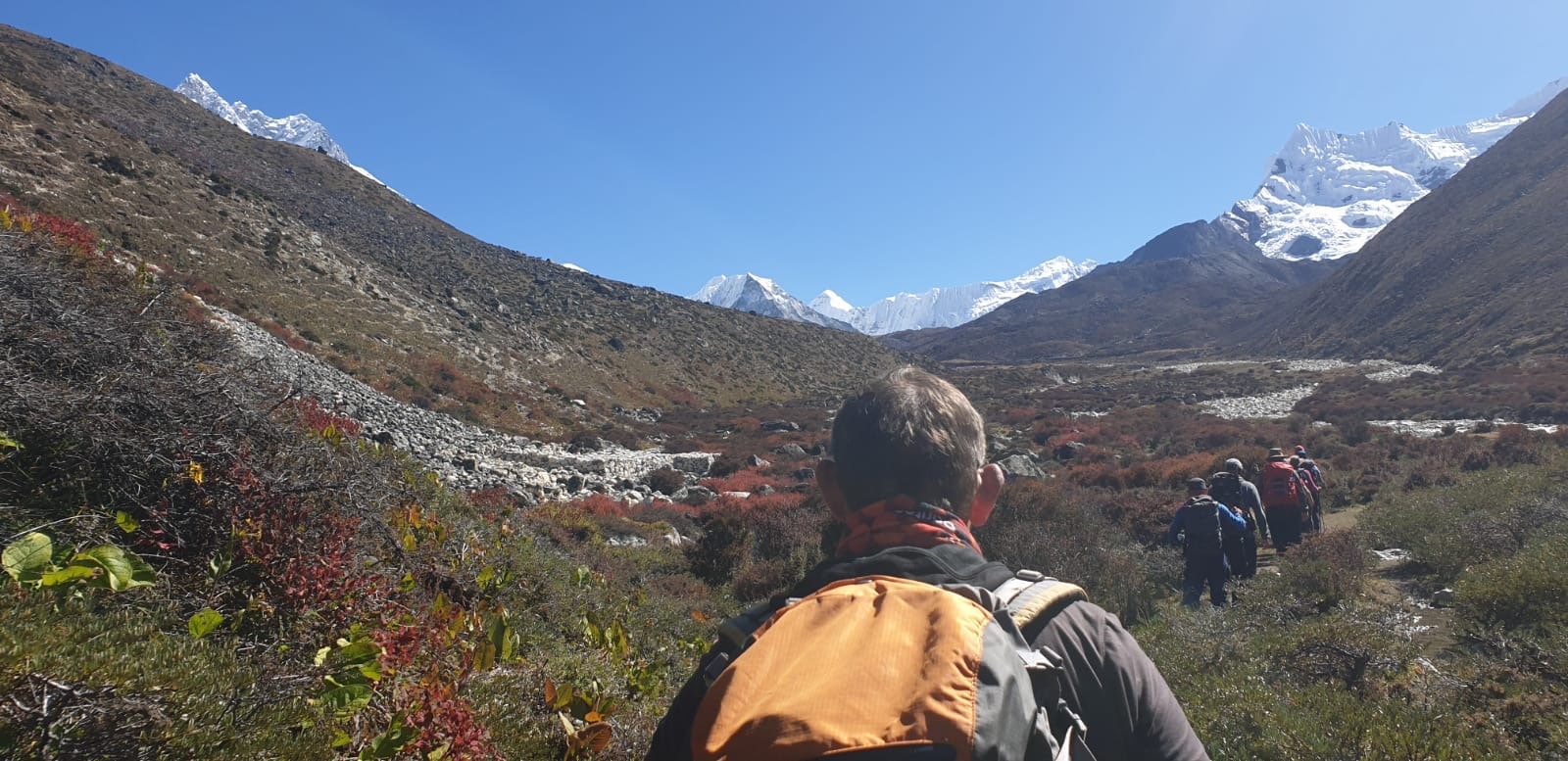8 handy Trekking training tips to help you train for your next big adventure trekking holiday
So you’ve bitten the bullet and signed up for an adventure trek of a lifetime.
You’ve done the right thing, good on you.
But if this is something you’re not too experienced in, there’s probably quite a lot you’re wondering right now. Namely…
When, where and HOW do I prepare my body?
Even those with the bulgiest of calves need to get some training in if they want to see success on their trekking adventure – and especially if they want to do it comfortably.
What difference does your destination make?
Obviously, the longer your trek, the more you’ll need to train. That being said, there’s nothing wrong with doing a lot of training for a relatively short and “easier” hike. In fact, we take it back, you should take it upon yourself to do as much preparation as possible.
Getting out into the great outdoors, checking out the natural beauty all around and warming your body up for the main event has got to be a good thing, right?
So whether you’re trekking Mera Peak, the Great Wall of China, or Mount Toubkal, these tips are your friends. Get stuck in, do your best, enjoy the ride and reap the benefits when it’s time for your trip of a lifetime.

Trekking training tip #1: Find your feet
Maybe you’ve got a fetish, maybe you can’t stand the sight of them, but however you feel about feet, you’ve got to take yours seriously when it comes to ensuring a successful and comfortable trekking trip.
Be sure to give your walking shoes a good test run before you go on your trek. Nobody wants to find themselves halfway to Everest Base Camp with a soleful of blisters.
Do all your training in the walking boots or shoes and socks that you plan to wear during your trekking holiday to get your feet used to them.

Trekking training tip #2: Start early
The harder your adventure trek, hike or climb, the more training you’ll want to do, but whatever you’ve got planned, it’s sensible to start training a month or two before your trip. The longer you train for, the less likely you are to get blisters or strain something while you’re up on the mountain or making your way through the desert.
So create a firm schedule for training when you book your trip, and make sure you stick to it. Set reminders if you need to!
Trekking training tip #3: Start slowly too
You don’t need to go in all guns blazing, especially if your fitness levels aren’t the best they’ve ever been. Much better to understand your limits, and work around them.
Doing as much as possible as often as possible won’t necessarily put you in the best stead for your hike. Don’t be embarrassed to start much slower and let your body acclimatise to its new activity levels.
Pole Pole (slowly, slowly) as they say in Tanzania
Start slowly with regular, short walks and gradually build them up until you’re able to comfortably get 15km under your belt in one go, at least two weeks before you travel.
Even if you just get out for an hour – even just 30 minutes – two or three times a week to begin with. The more you do it, the quicker you’ll become and the more distance you’ll be able to cover. That’ll come in essential when you’re in the real-life situation, faced with getting up and walking 12km+ every day, trust us!

Trekking training tip #4: Go up
Don’t stick to the flat. Even if your planned trek doesn’t have a huge amount of height gain in it, you’ll reap huge benefits in terms of your fitness and strength if you spend time practising your walking in hillier terrains.
Best place you can do this in the UK? In the Lake District of course. But not everyone’s got the time or means to take another few days away. Do your research and find the nearest inclines to your home, stretch your calves and off you go.
Trekking training tip #5: Don’t forget your rucksack
Find out exactly what you’ll be carrying with you each day of your trek. Then recreate the same weight in a rucksack for your practice walks at home.
For many of our longer treks, we’re lucky enough to have porters, mules or horses who’ll carry the bulk of our luggage. But you’ll certainly be donning a day backpack for each day’s walking too. So get your body used to the weight it’ll be carrying on the hike!

Trekking training tip #6: Start running
Okay, so if you’re not a runner and you’re not currently very fit, this might sound terrifying. But if you’re going to put the effort into regular walking, then you might surprise yourself and find yourself ready to run sooner than you thought you could.
If you can combine some runs with your regular walks, you’ll build up your stamina and resistance and ready yourself for your big hike.
Trekking training tip #7: Keep things interesting
Everything’s easier with a bit of company, and you’re much more likely to set yourself up for success on the mountain if you enjoy your training in the first place.
So invite your friends to join you as often as possible! It’s more fun, and it’s extra motivation to help you stick to your trekking training schedule too.
Don’t be afraid to mix things up either. The more varied the type of exercise you do, and the places you do it, the better. Don’t risk getting bored with your training by going to the same hill again and again – try all the best local spots!

Trekking training tip #8: Don’t forget your core
Cardiovascular exercise and practice hikes are going to do you a world of good. But a spot of strength training will certainly help you too. Focus on your core to improve your balance and posture – two important factors that’ll really help you on your trek.
Lunges and squats are great for increasing your leg strength. Planks and Pilates are perfect for looking after your core. They don’t take long to do either!
Create a schedule and don’t be afraid to ask for more information
And there you have our best tips to help you train for your trekking trip of a lifetime. Below is a rough training schedule that’s guaranteed to do you a world of good.
| 3 months to go | Walk for at least 30 minutes one week, then do the same the next week, without a break. Don’t worry about the distance and simply focus on being able to keep walking for 30-40 minutes, twice a week. |
| 2 months to go | Increase your walking time to one or two hours, once or twice a week. Start thinking about what you’re wearing and carrying – i.e. wear your planned walking shoes and carry some water in a rucksack. |
| 1 month to go | Keep walking with at least the same frequency as you did last month, but increase the amount of gear you’re carrying and the distances you travel. Add some more weight to your rucksack too. |
| 3 weeks to go | Concentrate more on your distance. By the end of this week you’ll want to be able to comfortably achieve a 10km walk, and you could add more weight to your pack to help you improve too. |
| 2 weeks to go | Keep doing more of the same, just increase your distances throughout the week. Set yourself a target to be able to walk for 15km – and don’t forget to take breaks, like you will be on your trip! |
| 1 week to go | Make sure you’re wearing your full gear for every practice walk, and set yourself a new target of 15-20km for each walk you complete during the week running up to your trip. |
Now pluck up your courage, book your Bucket List trip of a lifetime and start your training! Give us a buzz if you want to know any more about the required fitness levels for any of our trips. The number’s 01769 309007.
You can check out all of our Trekking Trip by Clicking HERE

 Basket
Basket




